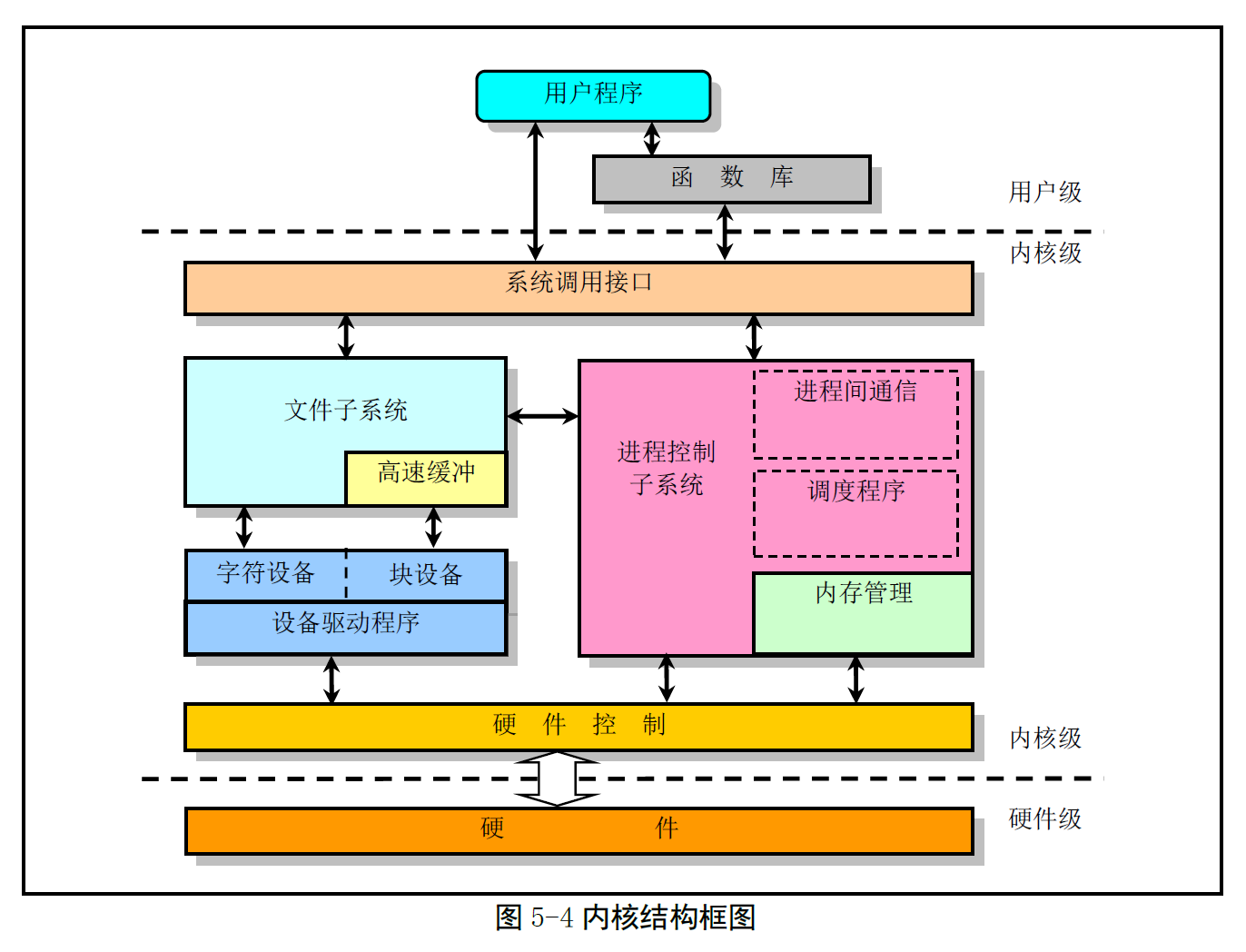Chapter 5.1-5.2 - Linux 内核模式 & 体系结构
Created by : Mr Dk.
2019 / 08 / 02 19:32
Nanjing, Jiangsu, China
一个完整的 OS 可由四部分组成:
- 硬件
- OS 内核:对硬件资源进行抽象,对所有系统资源进行调度管理
- OS 服务:向用户提供的服务,被看作是 OS 部分功能的程序 - shell、内核编程接口等
- 用户应用程序
5.1 Linux 内核模式
OS 内核的结构模式可分为:
- 整体式单内核模式
- 层次式微内核模式
Linux 0.12 内核采用的是 单内核模式。
OS 提供服务的流程为:
- 应用程序使用指定的参数执行系统调用指令
INT 0x80 - CPU 用用户态切换到核心态
- OS 根据具体的参数值调用特定的系统调用服务程序
- 服务程序根据需要再调用底层的支持函数完成特定的功能
- CPU 从核心态切换回用户态,返回到应用程序中
三个层次:
- 主程序层
- 服务层
- 底层函数
单内核模式的优点:内核代码结构紧凑,执行速度快;不足:层次结构性不强。
对于微内核结构模式,主要特点:
- 系统功能模块化
- 消息传递
系统核心提供最基本的硬件抽象管理层和关键系统服务功能
- 进程/线程间通信服务
- 虚拟内存管理
- 进程调度
- ...
其余功能以各种模块化的形式在用户空间运行。
优点:
- 系统服务耦合度低
- 便于系统的改进、扩展、移植
缺点:
- 消息传递 - 微核心和系统各服务进程之间进行大量消息传递和同步操作
- 造成通信资源耗费和时间上的延迟
5.2 Linux 内核系统体系结构
Linux 内核主要由 5 个模块构成:
- 进程调度模块:控制进程对 CPU 资源的使用
- 内存管理模块:确保所有进程能够安全地共享机器主存区,支持虚拟内存管理方式
- 文件系统模块:支持对外部设备的驱动和存储,虚拟文件系统向所有外部存储设备提供一个通用的文件接口
- 进程间通信模块:提供多种进程间的信息交换方式
- 网络接口模块:对多种网络通信标准的访问,支持许多网络硬件
所有模块都与进程调度模块存在依赖关系,因为它们都需要依靠进程调度来挂起或重新运行。
